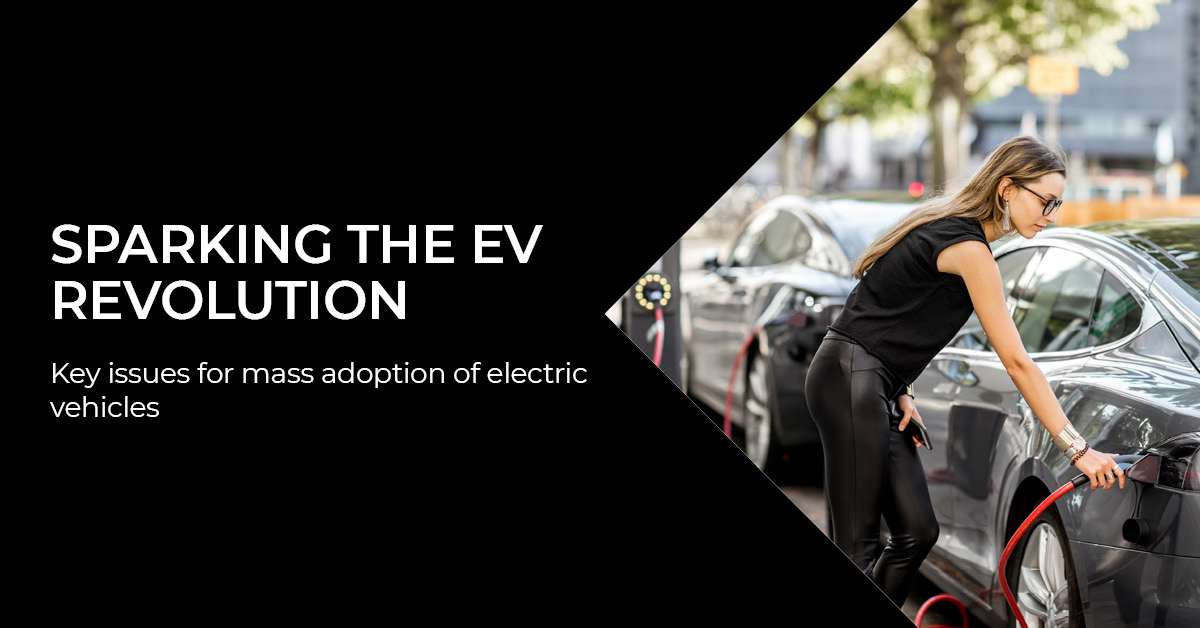 Spare a thought for Nikola Tesla. The Serbian/American scientific genius and rival of Thomas Edison, whose inventions continue to define how we use electricity today, died an impoverished and relatively unknown figure in a New York hotel during the second world war.
Spare a thought for Nikola Tesla. The Serbian/American scientific genius and rival of Thomas Edison, whose inventions continue to define how we use electricity today, died an impoverished and relatively unknown figure in a New York hotel during the second world war.
Today, his name is best known, not for his ground-breaking research on electricity generation and transmission, but as the brand of an electric car company, owned by the entrepreneur, Elon Musk. A company whose share price has recently been defying the laws of gravity. Nikola Tesla would no doubt be pleased that he is eventually getting global recognition.
Of course, the growing adoption of electric cars is not news. But what are the prospects for EVs in the coming years, and the opportunities and challenges that need to be overcome to move them from the periphery of mobility, to the mainstream?
Several credible organisations forecast on EV adoption and impact: the International Energy Agency; major energy companies; and, specialist researchers such as Bloomberg New Energy Finance. Where forecasts may vary on pace and scale of EV adoption, all align on common themes:
- EV market share is growing, and will be between 30-50% of the car fleet by around 2030
- China is, and will continue to be, the world’s largest EV market
- EV growth will cut oil demand and ‘well to wheel’ greenhouse gas emissions
- Policy is critical to the pace of EV growth: charging infrastructure incentives; fiscal incentives; and, fuel charges
These themes mean change for consumers, distribution businesses and governments alike.
For consumers, a new vehicle is often the biggest purchase they will make during their lives, next to their homes. According to Bloomberg, around 30 million passenger EV sales will be made in 2030, a 15-fold increase on 2018 sales. Supporting this forecast are narrowing price differences between EV and internal combustion vehicles; tougher emissions regulations, and most major manufacturers responding to this with new EV model launches. But the big concern for users of EVs is the driving range of these vehicles, the availability of charging infrastructure, and the length of time it takes to charge their cars. These issues remain a work in progress.
While charging infrastructure is growing rapidly, the bulk of this growth is in the ‘private, slow charging’ category – largely the charging points installed in our own homes. What’s required – not least to change the psychology of potential EV adopters – is rapid growth in fast and ultra-fast charging points across national road networks. This also supports those who don’t live in a property where installation of charging equipment is feasible – many of us don’t, and this is especially true in areas of high density or off-grid housing. Solutions are emerging, including ultra-fast charging networks, battery swapping and cooperation between charging operators, but so far, these are not enough to make EVs comparable to ICE vehicles for consumers without ready charging access. Rollout of public charging availability could hold the key to the pace of mass adoption.
For distribution businesses, mass electrification of the heavy goods fleet, both on land and sea, remains some way off. This is in part due to charging infrastructure availability on many of the key land trade routes, but also due to the technical challenges of ensuring electricity can replace the massive ‘grunt’ needed by the much larger engines that road trains and shipping require. It’s likely that while these technologies improve, the focus will remain on making ICE configurations more efficient, extending the use of gas – a lower emitter of GHGs than petrol and diesel, and examining wider use of hydrogen for heavy transportation.
For governments, it’s clear that policy is a critical tool in incentivising adoption. At a high level, governments are increasingly committing to net zero targets – in the case of the UK Government, by 2050. This forces fresh thinking around the design of a future transport system. A good case study in incentivising the system of the future is Norway, a small country, yet with the highest per capita rate of EV ownership. Why? The Norwegian Government has taken a ‘double whammy’ approach: favourable tax treatment on EV ownership, cheaper parking for EV vehicles, reduced or zero road tolls and widely available free charging, alongside high rates of tax for petrol and diesel-powered cars. It all adds up to cheaper EV passenger cars than ICE equivalents. Norway seeks all new car sales to be zero-emission vehicles by 2025. Ambitious, but an illustration of how public policy can drive consumer behaviour.
Can the Norwegian experience be replicated elsewhere? Taking the US as an example, there are several barriers. First, political will. Would the leaders of the self-styled ‘home of the automobile’ and a major producer of fossil fuels intervene in a market which supports millions of American jobs and exports? Second, the US has many more cars and people than Norway – the fiscal flexibility needed to attempt what has happened in Norway may be considerably tougher. So, policy levers will work in some countries, but may be more difficult in others, meaning the pace of change globally will be asymmetric.
EVs are here to stay, of that there is no doubt. But making them mainstream depends on resolving the key issues facing consumers, business and governments. Doing so, will dictate the pace of the electric mobility future.
The Moore Energy, Mining and Renewables team can advise organisations on their EV and mobility strategies to ensure maximum benefits for your business, employees, customers and communities. Please get in touch.
David Tomasi, Global Leader, Moore EMR Group
david.tomasi@moorestephens.com.au





